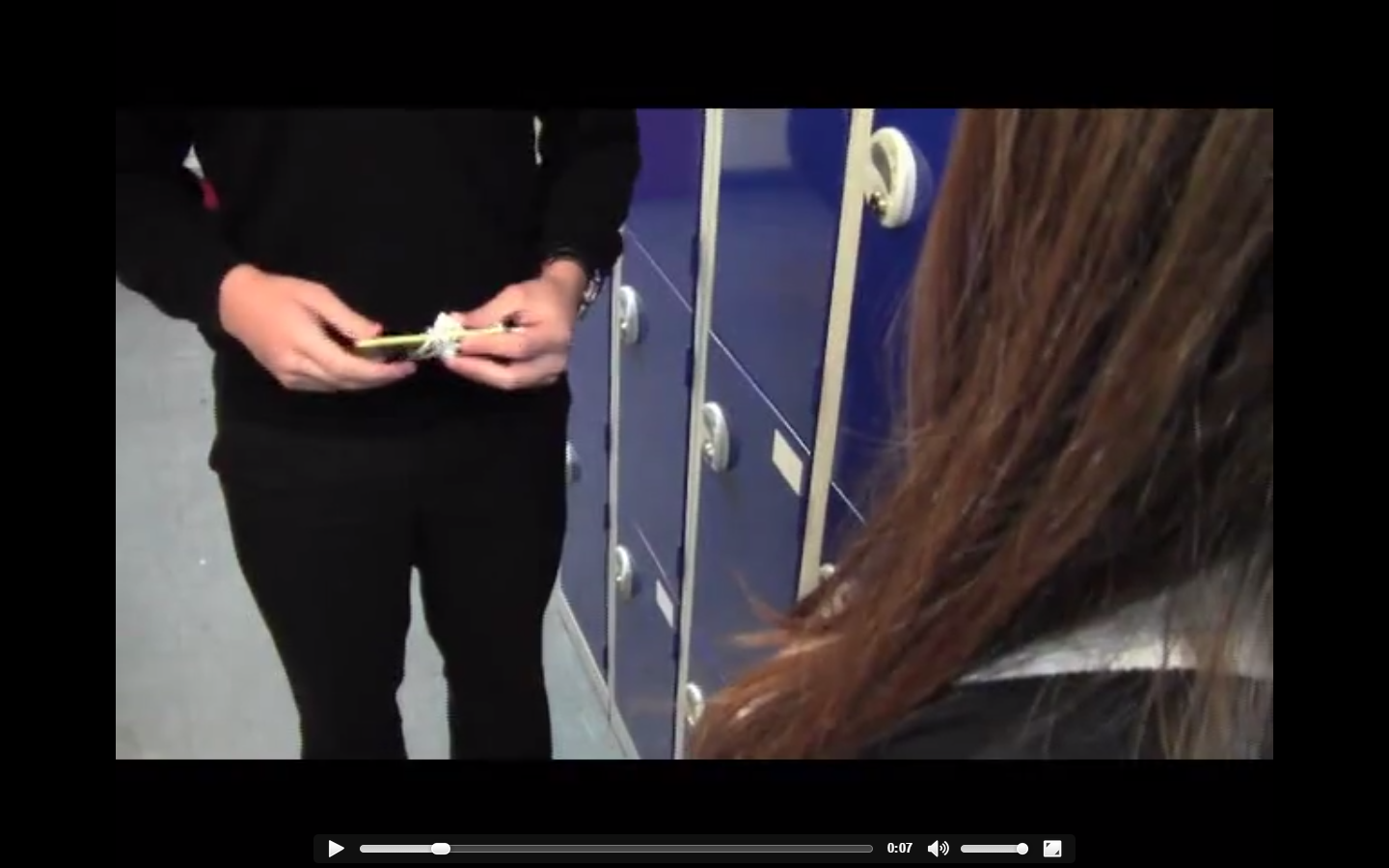Untitled from Bishop Walsh on Vimeo.
I have not had much experience in filming, using a camera or in editing a film. This activity allowed my confidence in filming to grow dramatically, it widened my view on filming and showed me there are no limits to what I can achieve when I have a go at my short film.
We was set into groups and given a short script to follow as a first attempt at filming, giving us ideas and getting us used to to feel of film making.
The first was a very basic and short script to view Person A walk into a room and give an object to Person B, and then walk away.
A second separate script was given to enhance our filming skills, but I decided to connect the two
and create a full storyline. I realised this would be a good way to practice for filming my real short film and allow me to feel comfortable in front of and behind the camera.
Person A is working at a desk. They start daydreaming
In the daydream they nervously walk along a corridor and approach a door. They don't know what's on the other side.
They walk through the door and see person B, someone they had not expected to see.
Person B: Hello.
This was a very simple and unchallenging script for my group to complete, and we therefore decided to adapt and lengthen this storyline making it our own, and giving it a darker twist.
Using the camera its self did not take long to get the hang of, and soon enough we were constantly thinking of fresh ideas on new shots, scenes and angles, to show variety and appropriate skills.
Once the storyline was filmed, we uploaded it to Vimeo, an editing software I was not familiar with. It took me a while to understand the website and how to edit my film shot by shot. Once I looked around the software and experimented I was then able to apply fade in from black to the start of the film, and fade out to black to finish, this allowed the film to flow in and out and not have a sudden beginning or end, it also fitted in with the 'daydream' idea as though this was not reality.
I then took the editing further by making it obvious as to when the daydream started and finished. I did this by using a medium shot that zooms into an extreme close up to the eye, that shot zooms out to a medium shot again and it is in a new location. I connected these two scenes with a swirling hypnotic blur, this allowed an obvious transition from dream to reality.
First shot is a low angle long shot, with the full inside setting in view and character centre of shot. using a low angle allows power and dominance of character as he carries the item to be dealt over in next scene.
Contrast is shown within the next scene as power exchanges when the item is passed from one character to another.
By using a high angle over the shoulder it gives an element of mystery by not allowing the new character to be viewed and gives an element of secrecy and danger, giving a dominance, By using high angle also allows the audience to feel involved in the act and shows an importance of the exchange of item by focusing only on the gesture of exchange and not the characters.
During the change in storyline from reality to daydream, I began by using Character B at a medium shot with them in centre shot at a desk. As the character stops working and raises head the camera is slowly lead closer and closer to face ending as an extreme close up to eye. This dramatic sequence builds tension and allows this character to have all importance and attention.
By zoning in on they eye this can connotate a sense of intimacy, and being able to access their mind and thought process. In this case the subconscious dream state of the character.
In order to emphasise the moment of change in state from reality to daydream, I included a swirling edit to connect the jump cut. Which distorts the whole screen, and as the swirls on screen dispatch we are taken to another extreme close up to the eye which zones out back to a medium close up in a completely different state and location.










